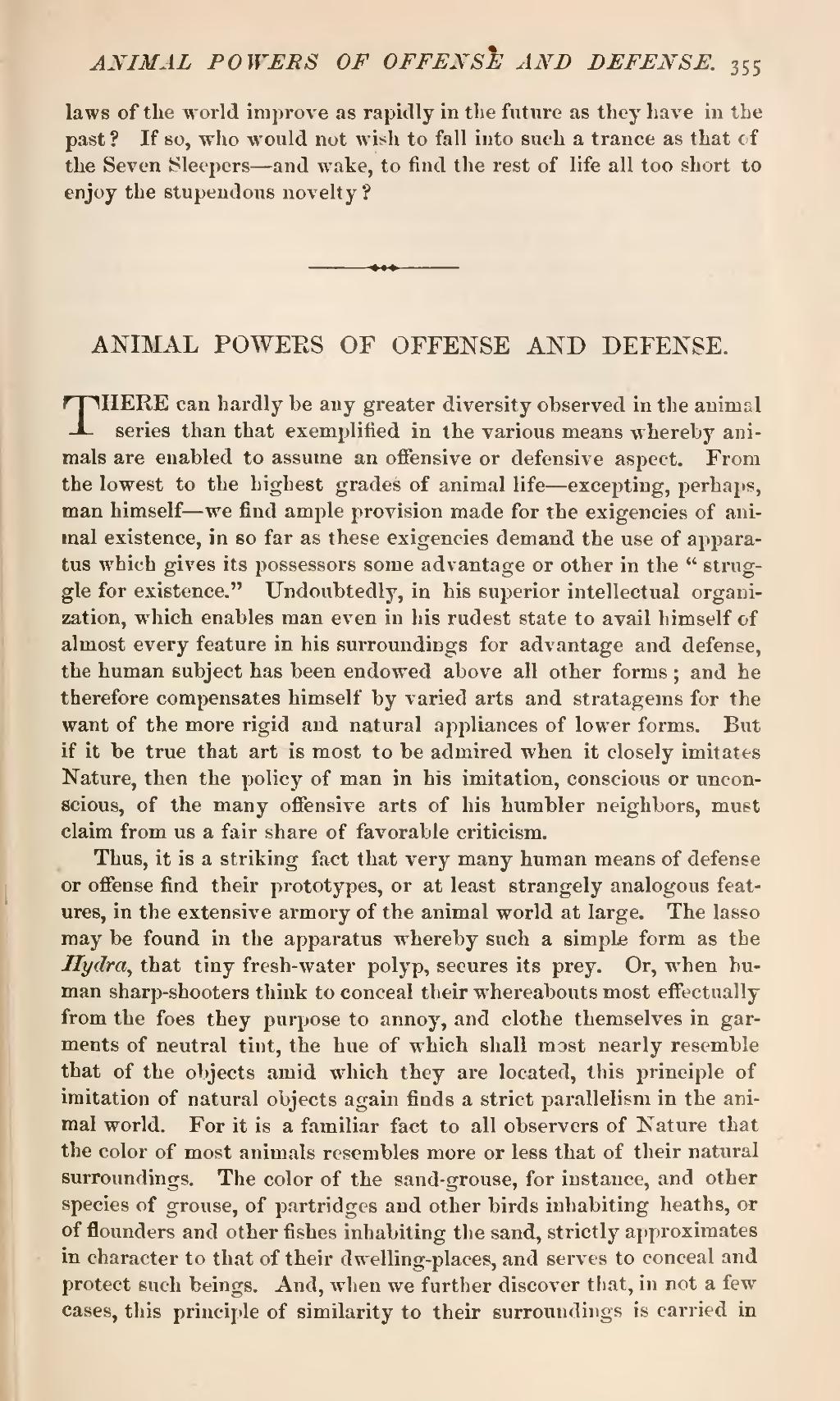laws of the world improve as rapidly in the future as they have in the past? If so, who would not wish to fall into such a trance as that of the Seven Sleepers—and wake, to find the rest of life all too short to enjoy the stupendous novelty?
| ANIMAL POWERS OF OFFENSE AND DEFENSE. |
THERE can hardly be any greater diversity observed in the animal series than that exemplified in the various means whereby animals are enabled to assume an offensive or defensive aspect. From the lowest to the highest grades of animal life—excepting, perhaps, man himself—we find ample provision made for the exigencies of animal existence, in so far as these exigencies demand the use of apparatus which gives its possessors some advantage or other in the "struggle for existence." Undoubtedly, in his superior intellectual organization, which enables man even in his rudest state to avail himself of almost every feature in his surroundings for advantage and defense, the human subject has been endowed above all other forms; and he therefore compensates himself by varied arts and stratagems for the want of the more rigid and natural appliances of lower forms. But if it be true that art is most to be admired when it closely imitates Nature, then the policy of man in his imitation, conscious or unconscious, of the many offensive arts of his humbler neighbors, must claim from us a fair share of favorable criticism.
Thus, it is a striking fact that very many human means of defense or offense find their prototypes, or at least strangely analogous features, in the extensive armory of the animal world at large. The lasso may be found in the apparatus whereby such a simple form as the Hydra, that tiny fresh-water polyp, secures its prey. Or, when human sharp-shooters think to conceal their whereabouts most effectually from the foes they purpose to annoy, and clothe themselves in garments of neutral tint, the hue of which shall most nearly resemble that of the objects amid which they are located, this principle of imitation of natural objects again finds a strict parallelism in the animal world. For it is a familiar fact to all observers of Nature that the color of most animals resembles more or less that of their natural surroundings. The color of the sand-grouse, for instance, and other species of grouse, of partridges and other birds inhabiting heaths, or of flounders and other fishes inhabiting the sand, strictly approximates in character to that of their dwelling-places, and serves to conceal and protect such beings. And, when we further discover that, in not a few cases, this principle of similarity to their surroundings is carried in

